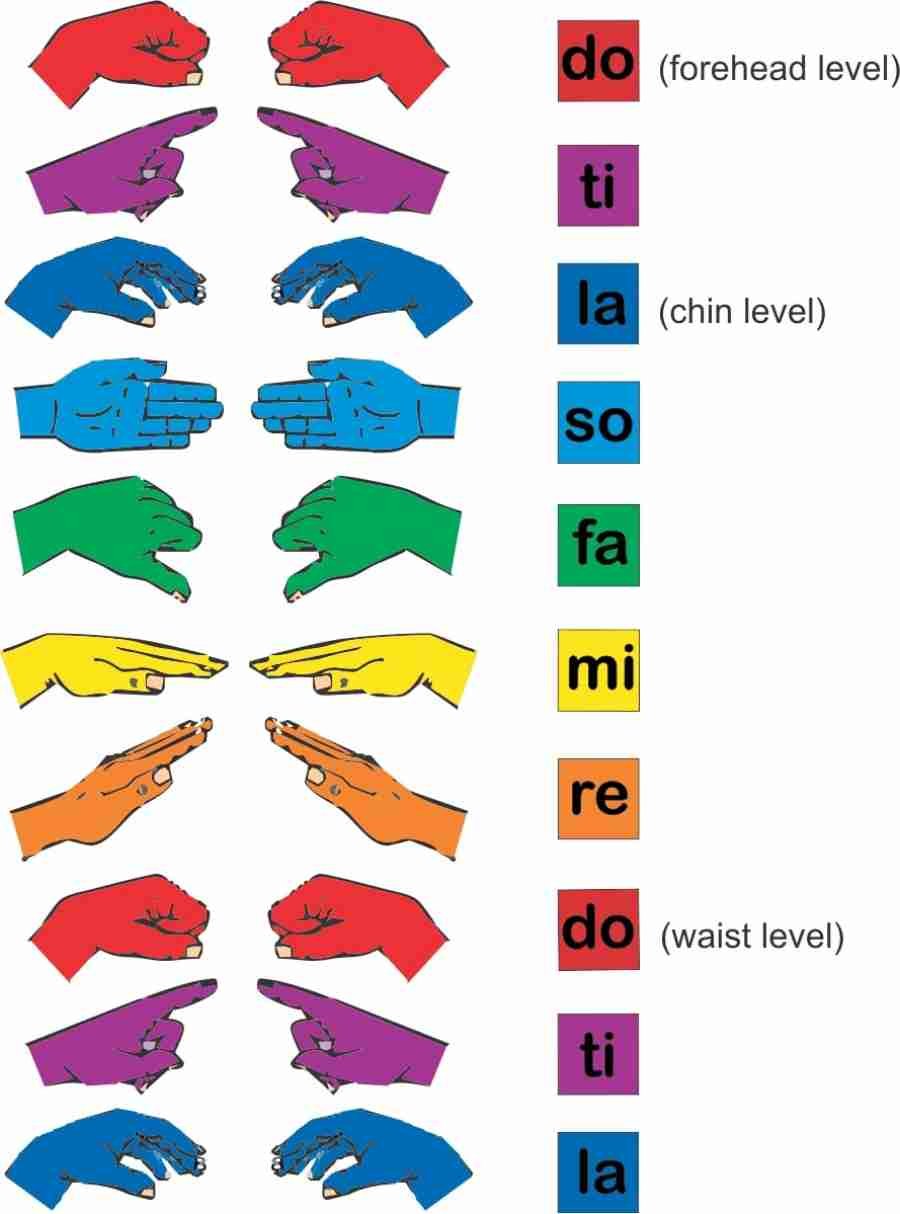Solfege hand signs? Yes, they are a powerful musical tool used by singers and musicians to visualize and internalize pitch relationships. Signifying each note of the solfege scale with a specific hand gesture, these signs aid in sight-singing and pitch accuracy. Mastering solfege hand signs can enhance your musical training and performance. Dive into this guide to discover the significance and practical application of each hand sign on your musical journey.
Solfege Hand Signs: A Fun Way to Learn Music
Are you a music enthusiast looking for a creative way to learn about notes and scales? Solfege hand signs might just be the answer you’re looking for! These hand signs are a visual and kinesthetic tool that can help you understand and memorize musical concepts easily.
What are Solfege Hand Signs?
Solfege hand signs are a set of hand gestures used to represent different musical notes in the solfege system. The solfege system assigns a syllable to each note of a musical scale, making it easier to sing and recognize pitches. These hand signs provide a physical representation of the syllables, helping you connect the sounds with the gestures.
Each hand sign corresponds to a specific solfege syllable and note. For example, the “Do” hand sign typically represents the tonic note of the scale, while the “Re” hand sign corresponds to the second note, and so on. By associating these hand signs with the notes, you can easily visualize and remember the sequence of pitches in a scale.
History of Solfege Hand Signs
The use of solfege hand signs can be traced back to Guido d’Arezzo, an Italian music theorist from the 11th century. Guido developed the solfege system as a way to teach singers how to sight-read music. Over time, the system evolved to include hand signs, making it even more interactive and engaging for learners.
In modern times, solfege hand signs have become a popular tool in music education, especially in choral settings. They are often used to help singers of all ages improve their pitch accuracy, ear training, and overall musicality.
How to Use Solfege Hand Signs
Learning to use solfege hand signs is a fun and interactive process. To get started, familiarize yourself with the hand signs and their corresponding syllables. You can practice by singing a simple scale (e.g., “Do-Re-Mi-Fa-Sol-La-Ti-Do”) while making the hand signs for each note.
One effective way to practice solfege hand signs is to play a musical instrument like a piano or a xylophone while using the signs. This can help you develop a strong connection between the visual, auditory, and kinesthetic aspects of music.
Benefits of Using Solfege Hand Signs
There are several benefits to incorporating solfege hand signs into your music education:
- Improved pitch recognition: By associating each note with a specific hand sign, you can train your ear to recognize pitches more accurately.
- Enhanced memory retention: The visual and physical cues provided by the hand signs can help you remember musical patterns and sequences more easily.
- Interactive learning experience: Using hand signs adds a tactile element to music education, making it more engaging and enjoyable.
- Developed coordination: Practicing solfege hand signs can improve your hand-eye coordination and fine motor skills.
Fun Activities with Solfege Hand Signs
There are many creative ways to incorporate solfege hand signs into your music practice. Here are some fun activities to try:
Solfege Hand Sign Memory Game
Create a memory game where you match solfege syllables with their corresponding hand signs. This can help reinforce your understanding of the relationships between notes and gestures.
Choreograph a Song
Pick a favorite song and create hand sign gestures to go along with the lyrics. You can perform the song using the hand signs as a form of expressive interpretation.
Group Singing with Hand Signs
Gather a group of friends or family members and practice singing in harmony using solfege hand signs. It’s a great way to bond over music and improve your ensemble skills.
Solfege hand signs are a versatile and engaging tool that can enhance your music learning experience. Whether you’re a beginner or an experienced musician, incorporating hand signs into your practice routine can help you develop a deeper understanding of music theory and improve your overall musical skills. So next time you’re exploring the world of music, don’t forget to add a touch of solfege hand signs to your learning journey!
Learn the Curwen/Solfege handsigns in minutes!!
Frequently Asked Questions
What are solfege hand signs used for in music?
Solfege hand signs are a visual representation of the musical notes in a scale. They are commonly used in music education to help singers and musicians associate pitches with specific hand gestures.
How many solfege hand signs are typically used in the traditional system?
In the traditional solfege system, there are seven basic hand signs corresponding to the seven notes of the major scale: Do, Re, Mi, Fa, Sol, La, and Ti.
How do solfege hand signs help musicians improve their pitch accuracy?
By using solfege hand signs, musicians can physically connect each note of the scale with a unique hand gesture, helping them internalize the relationships between pitches and develop a better sense of pitch accuracy and relative pitch.
Are solfege hand signs only used in vocal training?
No, solfege hand signs are not limited to vocal training. They are also commonly used by instrumentalists, such as pianists and string players, to reinforce pitch relationships and improve musical sight-reading skills.
Final Thoughts
In conclusion, solfege hand signs are valuable tools for singers and musicians. They enhance understanding of pitch and aid in sight singing. Practice incorporating solfege hand signs into your training for improved musical fluency. Mastering these simple gestures can elevate your performance and musical communication. So, embrace the solfege hand signs as a powerful resource in your musical journey.

